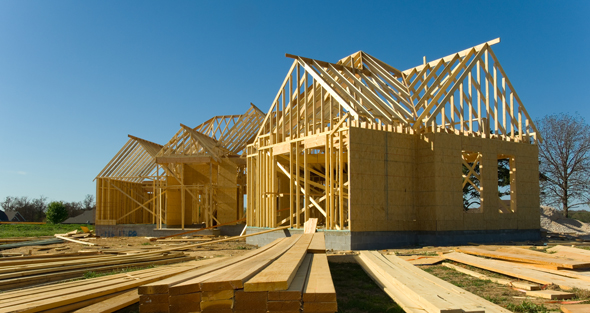Single-family housing starts grew slightly in July as builders contine to deal with challenges with housing affordability, labor shortages and elevated construction costs.
Led by multifamily construction, overall housing starts increased 5.2% in July to 1.43 million units, according to the U.S. Department of Housing and Urban Development and the U.S. Census Bureau.
“Single-family production continues to operate at reduced levels due to ongoing housing affordability challenges, including persistently high mortgage rates, the skilled labor shortage and excessive regulatory costs,” says Buddy Hughes, chairman of the National Association of Home Builders (NAHB) and a homebuilder and developer from Lexington, North Carolina. “These headwinds were reflected in our latest builder survey, which indicates that affordability is the top challenge to the housing market.”
Within the overall number of 1.43 million units, single-family starts increased 2.8% to a 939,000 seasonally adjusted annual rate and are down 4.2% on a year-to-date basis.
The multifamily sector, which includes apartment buildings and condos, increased 9.9% to 489,000.
“The slowdown in single-family home building has narrowed the home building pipeline,” says Robert Dietz, NAHB chief economist. “There are currently 621,000 single-family homes under construction, down 1% in July and 3.7% lower than a year ago. This is the lowest level since early 2021 as builders pull back on supply.”
Elevated mortgage rates, weak buyer traffic and ongoing supply-side challenges continued to act as a drag on builder confidence in August, as sentiment levels remain in a holding pattern at a low level.
“Affordability continues to be the top challenge for the housing market and buyers are waiting for mortgage rates to drop to move forward,” Hughes says. “Builders are also grappling with supply-side headwinds, including ongoing frustrations with regulatory policies connected to developing land and building homes.”
Builder confidence was 32 for August, down one point from July, according to the Housing Market Index (HMI). Builder sentiment has been negative for 16 consecutive months and has hovered between 32 and 34 since May.
“Housing affordability is central to the outlook for economic growth and inflation,” Dietz says. “Given a slowing housing market and other recent economic data, the Fed’s monetary policy committee should return to lowering the federal funds rate, which will reduce financing costs for housing construction and indirectly help mortgage interest rates.”
 Hardware Retailing The Industry's Source for Insights and Information
Hardware Retailing The Industry's Source for Insights and Information








